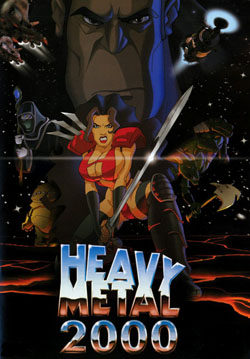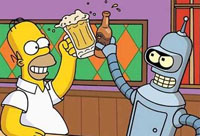 Bluth’s Beauty and the Beast. According to well-respected animation historian (and Bluth historian who once worked for the animator-director) John Cawley: “Early in 1984, Don (Bluth) began in earnest turning the famous tale (of Beauty and the Beast) into an animated feature. He even announced it in the Fall of
Bluth’s Beauty and the Beast. According to well-respected animation historian (and Bluth historian who once worked for the animator-director) John Cawley: “Early in 1984, Don (Bluth) began in earnest turning the famous tale (of Beauty and the Beast) into an animated feature. He even announced it in the Fall of 1990 1984 in his Animation Club newsletter. At the time, he described it as ‘a tender love story that says, ‘a thing must be loved before it’s lovable.’ We sprinkled this classic tale with a generous amount of comedy, a little bit of terror, and a lot of love. From Nan, the clairvoyant dog, Max, a bird detective, and Otto, an escape artist lizard, to the King Bats, the Wee Beasties and Queen Livia, herself, this picture has something for everyone.’ An American Tail also interrupted this production. As work began on Land Before Time, Don felt that Beauty and the Beast would be his first independent picture. However in late 1986, the Disney Studio announced they were working on a version and by 1989 had begun full production (for a 1991 release). Knowing his version could not be completed before Disney’s, Don dropped the project.”

The Don Bluth “Beatuy And The Beast” that never was.
Remembering Gerson. Recently re-watching Mary Poppins (1964), I saw a glimpse of actress Betty Lou Gerson as a elderly crone who frightens the children as they run away from the bank. Gerson was the voice of villainess Cruella De Vil, in Disney’s classic animated feature, 101 Dalmations (1961). She passed away on January 12, 1999 at the age of 84. She was also the (uncredited) narrator of Disney’s earlier film, Cinderella (1950). Her unique voice was often compared to that of Tallulah Bankhead. Marc Davis, one of Disney’s Nine Old Men, who designed and animated the character of Cruella, recalled, “Betty Lou’s voice was a true inspiration. She had one of those unique voices that gave you something special to work with and which helped me define the character. She was a dear lady and we will miss her very much.” She appeared in many television shows and movies but returned to doing animation voice over with her last role as the crabby, ex-diva fish, Francis, in Turner’s 1997 animated feature Cats Don’t Dance.
The Heavy Metal: FAKK2 Story. Actress Julie Strain who served as a live action reference model and voice of the title character in the animated feature Heavy Metal 2000 – which was released theatrically overseas as Heavy Metal: FAKK2 – stated in 1999 “I think people are going to love this movie, no matter what, because people are hungry for animation. They’re hungry for more Heavy Metal. They’re hungry for a sexy vixen and they’re hungry for something that will combine all of that and get them to the movie theater where they can hear loud rock and roll music.”
 Her husband, Kevin Eastman, creator of Teenage Mutant Ninja Turtles, served as screenwriter and producer and had convinced Columbia Pictures to release the original Heavy Metal film on home video.
Her husband, Kevin Eastman, creator of Teenage Mutant Ninja Turtles, served as screenwriter and producer and had convinced Columbia Pictures to release the original Heavy Metal film on home video.
This very loose sequel was not an episodic adventure but a narrative that centered on an innocent young woman named Julie who is left as the only surviving member of her race destroyed by Lord Tyler and who seeks revenge against him. She takes on the name FAKK2 that stands for “Federation Assigned Kinogenic Killzone to the second power”, a title that the Federation assigns to any planet that is deadly to carbon-based life forms.
“When I set out to make Heavy Metal: FAKK2,” said Eastman, “I wanted to create my own spin on some of my favorite movies and what they’ve meant to me. For example, I wanted something that had the desperation of Road Warrior, the intensity of Aliens, the attitude of Terminator and the magnitude of Akira Kurosawa’s Ran. I liked all of those elements and then I twisted them into a Blade Runner-esque setting.”
The film inspired a third person shooter video game by Ritual Entertainment in 2000. Reportedly a third Heavy Metal animated feature was in development that would again be an episodic film with segments produced and directed by David Fincher, James Cameron, Gore Verbinski, Guillermo del Toro and Eastman. Funding for that project was stopped in 2009 and at the 2011 San Diego Comic Con, filmmaker Robert Rodriguez announced he had purchased the rights to the franchise and planned to develop an animated feature.
Clay That Never Was. Will Vinton was involved in several projects that never aired including KLAY TV which was going to be a sketch comedy for Fox television that would have featured celebrities like claymation versions of Mick Jagger and Keith Richards. A pilot was produced in 1999. That same year Vinton was developing a feature film project that was to be co-produced by Mel Gibson’s ICON Productions to be called Cliff Damage.
 Simpsons Vs. Futurama. When asked in 1999 about the physical resemblance between the characters in Futurama and The Simpsons, Groening replied, “That’s the only way I can draw. Big eyeballs and no chins. One of the fun things about doing this show is basically taking the success of The Simpsons and knowing what we’re doing this time. The Simpsons does what it does really well. But, because we have rocket ships and ray guns and crazy robots and all this stuff, it lends itself to a more ambitious kind of animation. The animation is a combination of conventional cel animation and computer animation. But what we did is, we tried to flatten things out so it doesn’t look ‘computer-y’.”
Simpsons Vs. Futurama. When asked in 1999 about the physical resemblance between the characters in Futurama and The Simpsons, Groening replied, “That’s the only way I can draw. Big eyeballs and no chins. One of the fun things about doing this show is basically taking the success of The Simpsons and knowing what we’re doing this time. The Simpsons does what it does really well. But, because we have rocket ships and ray guns and crazy robots and all this stuff, it lends itself to a more ambitious kind of animation. The animation is a combination of conventional cel animation and computer animation. But what we did is, we tried to flatten things out so it doesn’t look ‘computer-y’.”
The Art of the Simpsons. Art work from The Simpsons first appeared on the public auction block at Christie’s East on June 20, 1991. It combined pieces from the Tracey Ullman Show shorts along with pieces from various first season episodes. The highest price realized was $24,200 for a specially created cel set-up to benefit AIDS project Los Angeles. All lots were “key” or “production” set-ups and ranged in price from $220-$7,920.
Go Go Oreb. Animation legend Tom Oreb was responsible for the design of the character Go-Go Gomez, the Mexican detective in the UPA Dick Tracy television series. On Oreb’s original model sheet, the character was named “Manuel”. It was some of the last animation work done by Oreb whose drinking and gruffness limited his opportunities later in life.


 Jim Korkis is an internationally respected animation historian who in recent years has devoted his attention to the many worlds of Disney. He was a columnist for a variety of animation magazines. With his former writing partner, John Cawley, he authored several animation related books including The Encyclopedia of Cartoon Superstars, How to Create Animation, Cartoon Confidential and Get Animated’s Animation Art Buyer’s Guide. He taught animation classes at the Disney Institute in Florida as well as instructing classes on acting and animation history for Disney Feature Animation: Florida.
Jim Korkis is an internationally respected animation historian who in recent years has devoted his attention to the many worlds of Disney. He was a columnist for a variety of animation magazines. With his former writing partner, John Cawley, he authored several animation related books including The Encyclopedia of Cartoon Superstars, How to Create Animation, Cartoon Confidential and Get Animated’s Animation Art Buyer’s Guide. He taught animation classes at the Disney Institute in Florida as well as instructing classes on acting and animation history for Disney Feature Animation: Florida.




















































So goo-goo-good to see Go-Go Gomez. I have NO clue why characters like that are considered “offensive”!!
Agreed, and he was UPA’s last attempt at being funny.
I didn’t think it was that bad.
In “Mary Poppins,” was Betty Lou Gerson the old lady in the alley who said “Come with me, my dears! Granny’ll hide you!”?
I get the impression that’s who she was, Justin. Such a quickie cameo really, still nice to know who was behind her and the voice of Cruella.
Yes indeed, she is the “Granny will lodge ya!” lady. I read a long time ago (maybe in one of Jim’s columns) she was one of Walt’s “good luck charms” that he liked to have in his films whenever possible.
Her voice is unmistakable and she did hundreds of radio shows before TV, then was a popular featured player.
In the Twilight Zone episode called “The Ring a Ding Girl” she is the lady who sat next to Maggie McNamara on the plane.
http://www.youtube.com/watch?v=suocjxd17Zg
She was also the lady on “The Dick Van Dyke Show” who claimed that she “did not own a television machine.” On the Loretta Young Show, she played a very creepy role in an unforgettable episode called “The Mirror.”
When asked in 1999 about the physical resemblance between the characters in Futurama and The Simpsons, Groening replied, “That’s the only way I can draw. Big eyeballs and no chins.”
Oh well, can’t blame him for keeping the consistency there.
Dick Tracy – Offending Minorities Since 1931.
“He even announced it in the Fall of 1990 in his Animation Club newsletter.” Typo? 1980 perhaps?
Actually it was announced in the Fall 1984 newsletter. I fixed it above.
Somehow I’m not too upset about missing Bluth’s version of “Beauty and the Beast.” Even in brief description it sounds like “Rockadoodle”: a basically sound story with too many characters and tangents pulling every which way. You admire the visuals but keep thinking “What’s going on?”